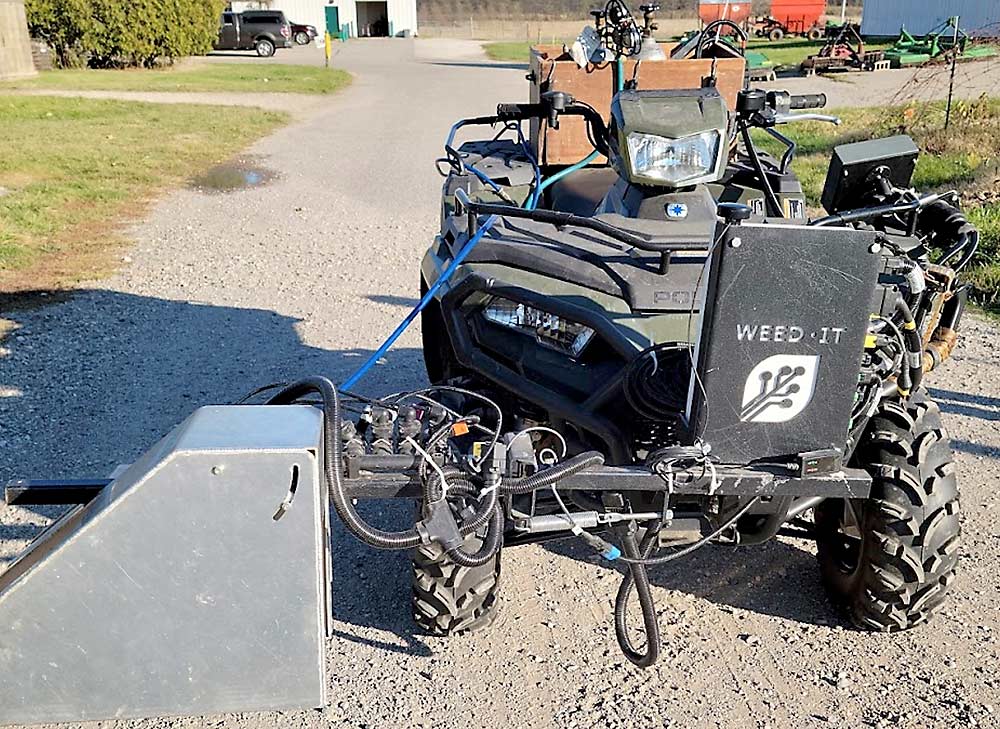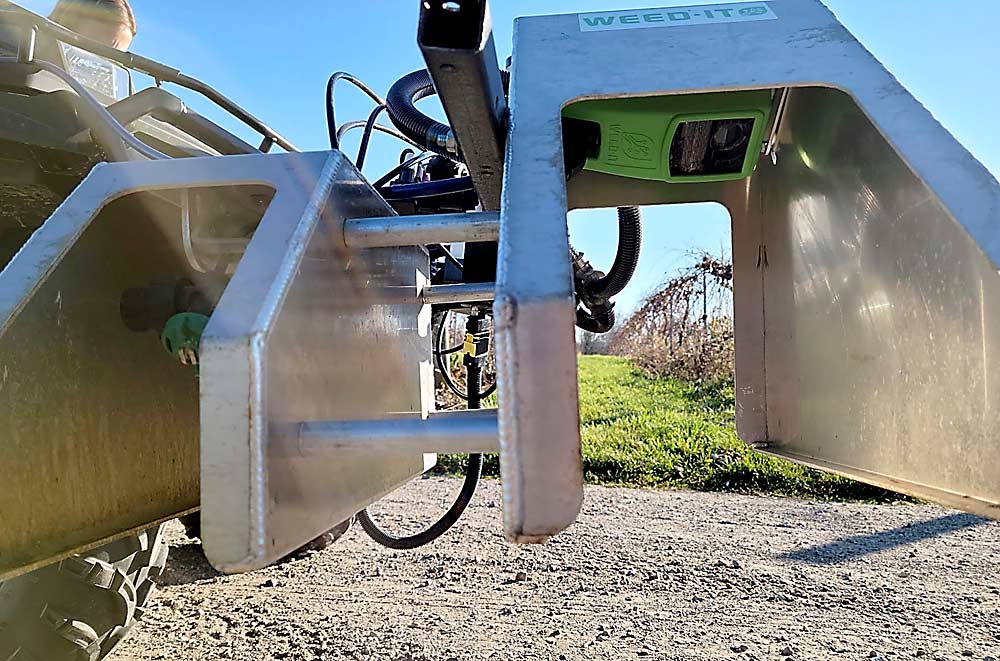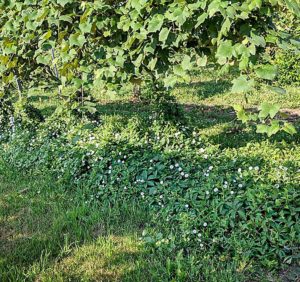
Most fruit growers these days still broadcast herbicides via tractor or backpack sprayer, but more precise application methods are on the horizon. Row crop growers are starting to use them, and scientists are studying their use in perennial crops.
Michigan State University assistant professor and weed scientist Sushila Chaudhari discussed her study of one of these new technologies — a chlorophyll fluorescence-sensing herbicide sprayer — during the International Fruit Tree Association’s conference in Grand Rapids, Michigan, in February.
Previous research in row crops has shown that precision spraying can reduce total herbicide use compared to broadcast applications, without negatively impacting weed control or crop fitness and yield. Chaudhari wanted to see how well precision technology works in fruit crops, where weeds are one of the toughest challenges.
She focused on vision-guided sprayers, which use sensors to detect weeds and target them more precisely than broadcast applications. The benefits of such precision technologies include reducing the use and cost of herbicides and improving crop safety by reducing off-target movement, she said.

There are multiple vision-guided systems on the market. For plant detection based on chlorophyll, Chaudhari listed the WEED-IT Quadro (manufactured by Dutch company Rometron), WeedSeeker (Trimble Agriculture) and See & Spray (John Deere).
She chose to study the WEED-IT Quadro because she liked its simplicity. The Quadro uses sensors to detect weeds based on their chlorophyll fluorescence. The sensors emit blue light, which is absorbed by chlorophyll in the weeds. The chlorophyll reacts by emitting a near-infrared signal, which is received and analyzed by the sensors. Spray booms connected to the sensors then spray the weeds, she said.
Chaudhari evaluated the Quadro sprayer in apples, blueberries and grapes at MSU’s campus research farm, comparing its performance to that of a typical backpack sprayer. Multiple applications of preemergent and postemergent herbicides were made in spring, summer and fall 2022.

According to her preliminary findings, the WEED-IT Quadro’s weed control efficacy was similar to or higher than the backpack sprayer’s. Neither method caused much crop damage. The Quadro consistently used more herbicide than the backpack sprayer, however — but this was likely due to the Quadro’s detection sensors being on a setting that was too sensitive, she said. Chaudhari will continue to study the Quadro’s settings and their impact on weed control and herbicide volume.
The project was funded by the Michigan State Horticultural Society, Michigan Blueberry Growers, the Michigan Apple Committee and the U.S. Department of Agriculture’s National Institute of Food and Agriculture.
—by Matt Milkovich







Great post! High-tech weed spraying with sensors and sensibilities represents a modern, environmentally conscious approach to weed management in agriculture. It leverages technology to improve the accuracy and efficiency of weed control while minimizing the impact on the environment and promoting sustainable farming practices.